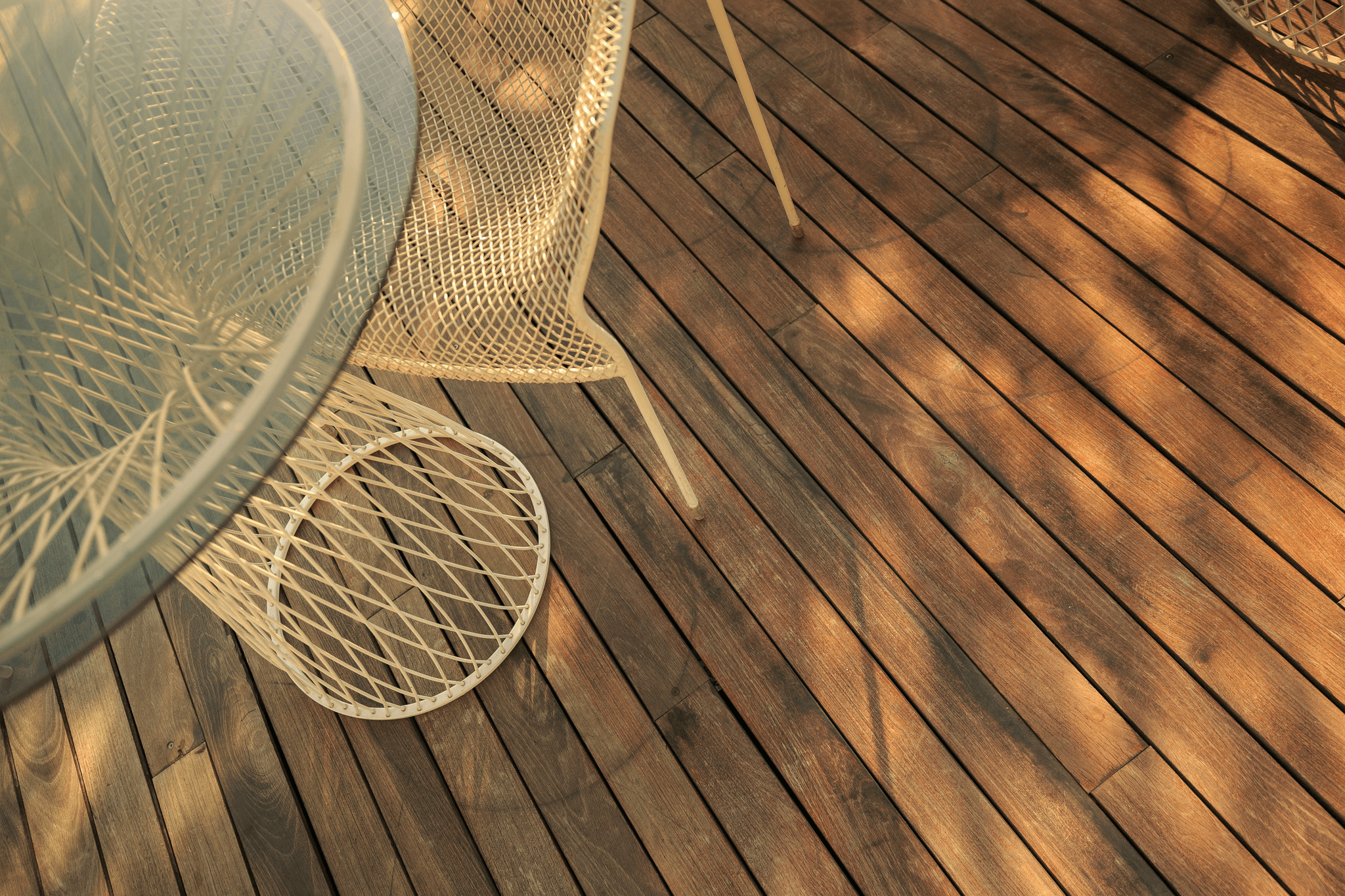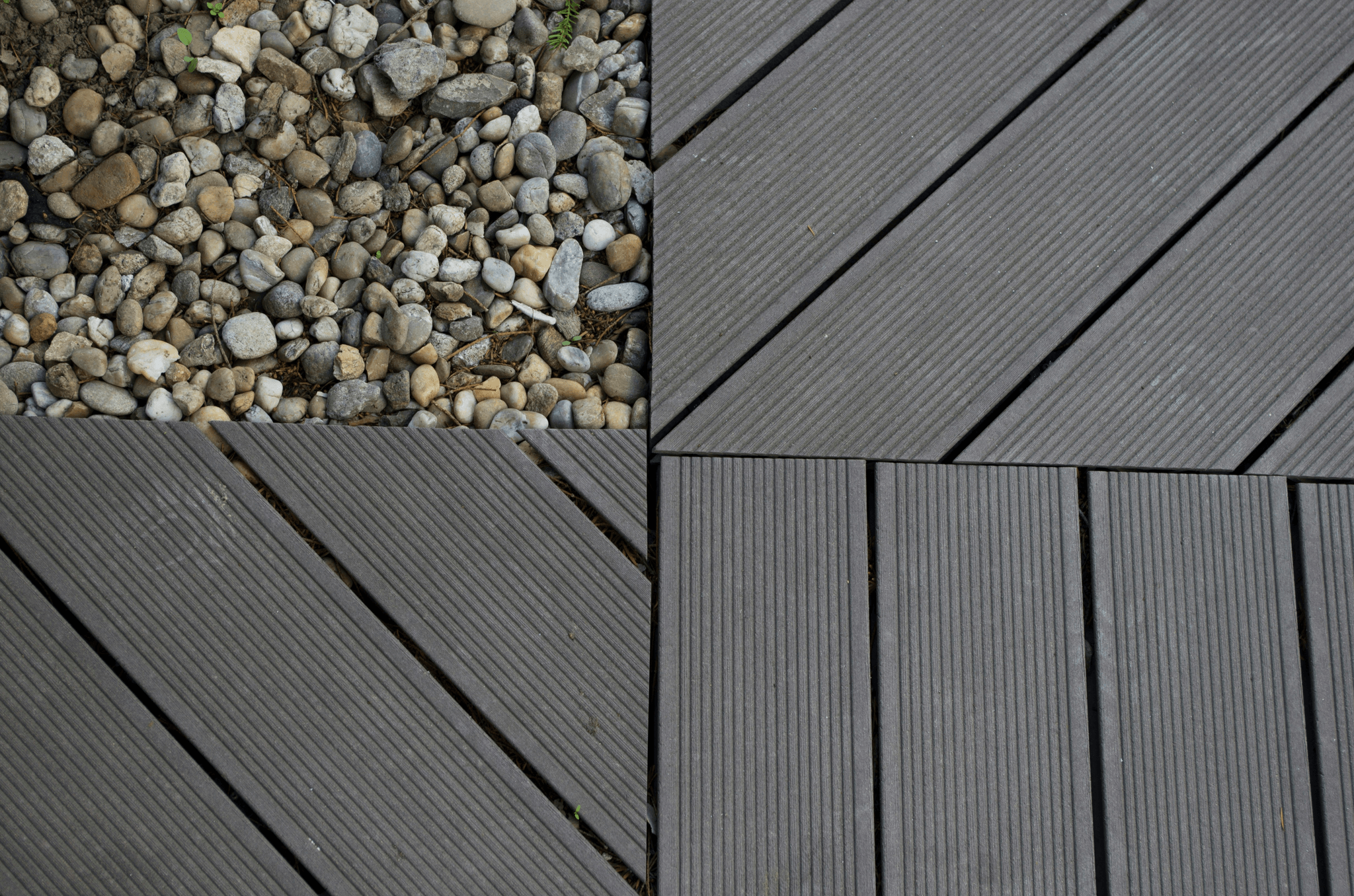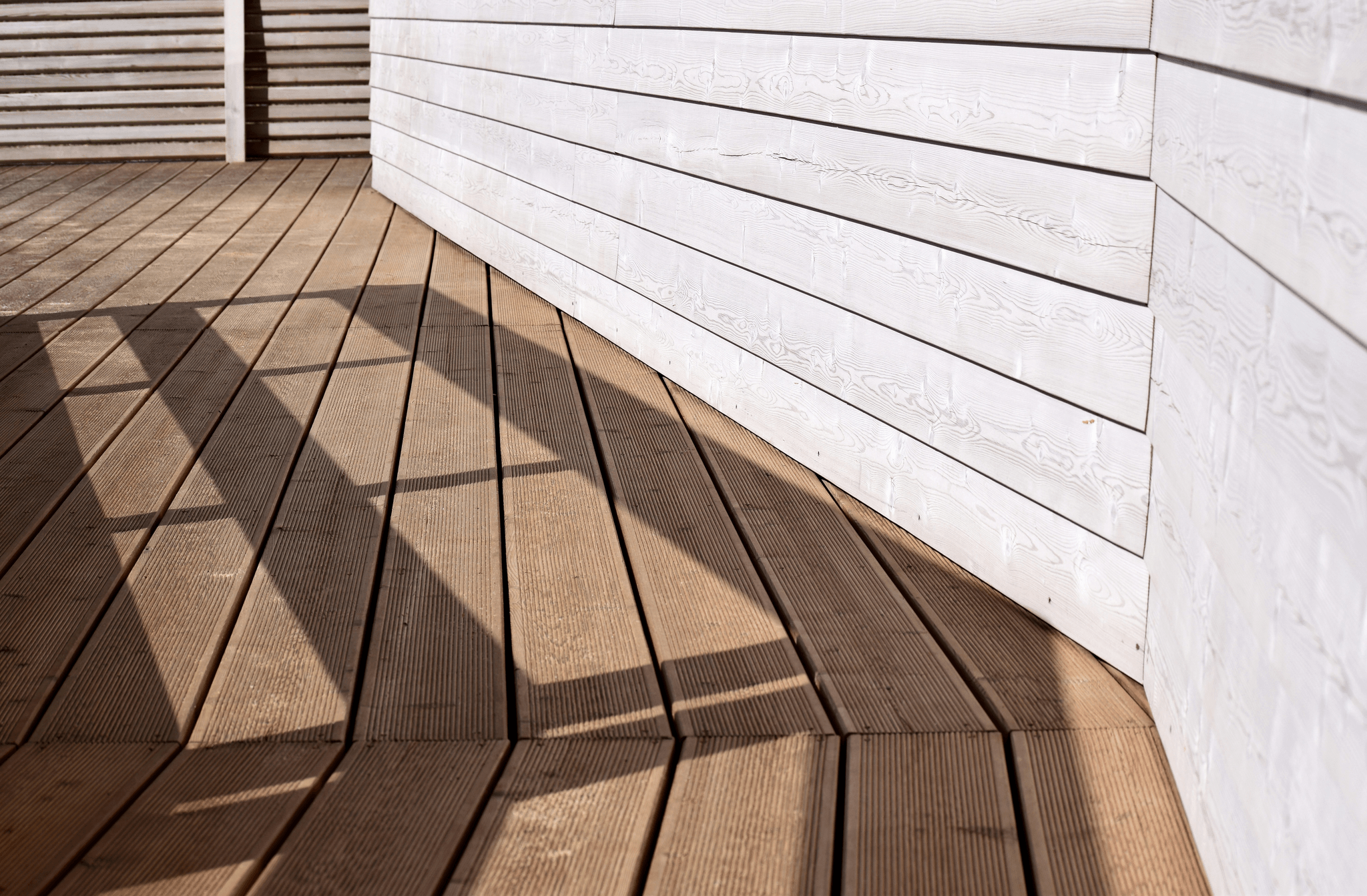Introduction
With various types of decking available, each material offers unique benefits and drawbacks that can influence your decision. Understanding these options will help you make an informed choice tailored to your lifestyle and aesthetic preferences.
Understanding the Best Decking Options
The world of decking materials is vast, with options ranging from traditional wood decks to innovative composite decking. Each type of decking has its own characteristics; for example, treated wood for decks provides durability while exuding natural beauty, while composite materials boast longevity and minimal upkeep. Diving into the specifics of these types of decking will ensure you find the perfect fit for your home.
Pros and Cons of Each Type
Evaluating the pros and cons of each decking material is essential in making a smart investment for your outdoor space. Wood decks are often praised for their classic appeal but may require more maintenance over time compared to deck boards made from composite materials. By weighing these factors carefully, you'll be better equipped to select the best decking that aligns with your budget and maintenance preferences.
Choosing the Right Decking Material
Selecting the right decking material involves considering aesthetics, durability, maintenance needs, and cost-effectiveness over time. While treated wood for decks has a timeless charm, composite decking is increasingly popular due to its resilience against weather elements and pests. Ultimately, understanding what each type offers will empower you to choose a deck that enhances both functionality and style in your outdoor environment.
Exploring Wood Decking

Treated Wood for Deck Durability
Treated wood is often the go-to choice for those seeking durability in their deck boards. This type of decking undergoes a special treatment process that helps resist rot, insects, and harsh weather conditions—making it an excellent option for longevity. While not as low-maintenance as composite decking, treated wood provides a sturdy foundation that can last many years with proper care.
Choosing treated wood for your deck means investing in materials designed to withstand the test of time while still providing that natural aesthetic appeal. It’s essential to note that not all treated woods are created equal; some treatments offer better protection than others. Therefore, researching the best options will ensure you select the ideal treated wood for your deck.
Aesthetic Appeal of Wood Decks
One cannot deny the timeless beauty of wood decks; they exude a rustic charm that few other types of decking can replicate. The rich colors and unique grain patterns found in various types of wood create an inviting atmosphere that enhances any outdoor space. Homeowners often appreciate how easily they can customize their wooden decks with stains or paints to match their personal style.
In addition to aesthetics, wooden decks provide versatility in design; whether you prefer traditional or modern styles, there’s a type of wood suitable for every taste. Pairing your deck with comfortable furniture and lush greenery further accentuates its natural allure. Ultimately, the aesthetic appeal of wood decks makes them one of the best decking choices available today.
Maintenance Requirements for Wood
While wooden decks are undeniably beautiful and durable when properly maintained, they do require regular upkeep compared to other types of decking like composite materials or vinyl options. Routine maintenance includes cleaning debris and dirt from surfaces and applying sealants or stains every few years to protect against moisture damage and UV rays. This commitment ensures your deck boards remain vibrant while extending their lifespan.
Neglecting maintenance can lead to issues such as warping or splintering over time—definitely not what you want on your outdoor oasis! Fortunately, many homeowners find joy in maintaining their wooden decks as part of their outdoor experience; after all, nothing beats enjoying a warm summer evening on freshly stained planks!
The Rise of Composite Decking

Composite decking has taken the outdoor living scene by storm, and for good reason. This innovative decking material combines the best of both worlds—durability and aesthetics—making it a popular choice among homeowners. With a variety of colors and styles available, composite decking offers versatility that appeals to a range of tastes while standing up to the elements.
Advantages of Composite Decking
One of the standout advantages of composite decking is its remarkable resistance to fading, staining, and scratching compared to traditional wood decks. Unlike treated wood for decks, which can warp or splinter over time, composite materials are engineered to withstand wear and tear while maintaining their visual appeal. Additionally, composite deck boards don’t require regular sealing or painting, saving you both time and money in maintenance.
Another perk is that composite decking is often made from recycled materials, making it an eco-friendly option in the realm of types of decking. This sustainability aspect not only helps reduce waste but also means you can enjoy your outdoor space with minimal environmental impact. Plus, many brands offer warranties that guarantee performance for decades, ensuring your investment stands the test of time.
Eco-Friendly Features of Composite Materials
The eco-friendly features associated with composite materials make them an increasingly popular choice among environmentally conscious consumers. Most composite decking products utilize recycled plastics and wood fibers, which means less landfill waste and fewer trees cut down for lumber. By choosing this type of decking material, homeowners can contribute to sustainability efforts without sacrificing quality or aesthetic appeal.
Moreover, many manufacturers are committed to responsible sourcing practices when creating their deck boards—ensuring that they’re not only using recycled content but also adhering to ethical production standards. This focus on sustainability aligns perfectly with modern values centered around environmental stewardship. As people become more aware of their carbon footprint, opting for eco-friendly types of decking like composite becomes a win-win situation.
Cost-Effectiveness Over Time
When considering long-term investments in outdoor living spaces, cost-effectiveness becomes a crucial factor—and here’s where composite decking shines brightly! Although the initial cost may be higher than treated wood for decks or other types of decking options upfront, the savings over time are undeniable due to reduced maintenance needs and longer lifespan expectations. Homeowners can avoid frequent repairs or replacements associated with traditional wood decks while enjoying peace of mind knowing their deck will last longer.
Additionally, since composite materials resist fading and damage from pests like termites or rot from moisture exposure better than standard wood decks do, they ultimately save you money in upkeep costs as well as potential replacement expenses down the line. When you add up all these factors—lower maintenance costs plus longer-lasting durability—it becomes clear why many consider deck composite options among the best choices available today.
Vinyl Decking: The Modern Choice

Unlike traditional wood decks, vinyl offers a unique blend of durability and low maintenance that appeals to many homeowners. With its rise in popularity, it’s essential to understand the benefits and features that make vinyl a strong contender among the various types of decking available.
Benefits of Vinyl Decking
One of the most significant benefits of vinyl decking is its exceptional durability. Unlike treated wood for decks, which can warp or rot over time, vinyl is designed to withstand the elements without losing its charm. Additionally, this type of decking requires minimal upkeep; a simple wash with soap and water is often all that's needed to keep it looking new.
Another advantage is that vinyl doesn't splinter or crack like wood decks can, making it a safer option for families with children or pets. Moreover, you won’t need to worry about regular staining or sealing, which can become costly over time with other decking materials. This translates into long-term savings and peace of mind for homeowners seeking hassle-free outdoor spaces.
Resistance to Weather and Pests
ture damage, ensuring that rain or snow won’t compromise its integrity like untreated wood might experience. Furthermore, pests such as termites have no interest in munching on vinyl; they prefer their meals served on treated wood for decks instead.
This level of resilience means you can enjoy your outdoor space without constantly worrying about repairs or replacements due to weather-related issues or infestations. In regions where extreme weather conditions are prevalent, having a reliable deck material is crucial for maintaining your investment's longevity and appearance. Thus, if you're considering types of decking that stand up against nature's challenges while providing lasting beauty, vinyl should be at the top of your list.
Aesthetic Variety in Vinyl Options
A common misconception about vinyl decking is that it lacks aesthetic appeal compared to traditional wood decks; however, this couldn’t be further from the truth! Today’s manufacturers offer an impressive range of colors and textures that mimic natural wood grains beautifully while providing all the advantages associated with synthetic materials. This means you can achieve your desired look without sacrificing durability when selecting from various types of decking options.
From sleek modern designs to rustic finishes reminiscent of classic wooden structures, there’s something for everyone in the world of vinyl decking aesthetics. Homeowners can create stunning outdoor spaces tailored specifically to their tastes while enjoying all the practical benefits this innovative material has to offer. So whether you're aiming for a chic contemporary vibe or a cozy cabin feel in your backyard oasis—vinyl has got you covered!
Comparing Lifespan and Durability

How Long Do Different Decking Materials Last?
The lifespan of decking materials can vary widely depending on the type you choose. Treated wood for decks typically lasts around 15 to 20 years with proper maintenance, while wood decks may require more frequent replacements due to susceptibility to weathering. In contrast, composite decking boasts a lifespan of 25 years or more, making it a popular choice for those seeking durability without constant upkeep.
Moreover, vinyl decking can last even longer than composite options, often exceeding 30 years due to its robust construction and resistance to environmental factors. When evaluating types of decking based on longevity, it's essential to consider not just the initial cost but also how long each material will serve you before needing replacement or repair. Ultimately, choosing durable deck boards will save you money in the long run by reducing replacement frequency.
Resistance to Rot and Damage
One significant factor in comparing types of decking is their resistance to rot and damage caused by moisture or pests. Treated wood for decks is designed with chemicals that help prevent decay; however, it remains vulnerable if not properly maintained. Wood decks are also prone to warping and splintering over time when exposed to harsh weather conditions.
On the other hand, composite decking offers excellent resistance against rot due to its synthetic materials that do not absorb moisture like traditional wood does. Vinyl decking takes this a step further by being impervious to water damage altogether while also resisting insects that typically plague wooden structures. Therefore, when considering durability against rot and damage in your decision-making process for best decking options, composite and vinyl stand out as superior choices.
Long-Term Value of Deck Boards
Investing in quality deck boards is essential if you're looking for long-term value from your outdoor space. While treated wood may have a lower initial cost compared to composite or vinyl options, its shorter lifespan means you'll likely spend more over time maintaining or replacing damaged sections. Composite decking might initially seem pricier; however, its extended life expectancy coupled with minimal maintenance requirements makes it a financially savvy choice in the grand scheme.
Furthermore, the aesthetics offered by various types of decking—especially composite—can enhance your property’s value significantly over time as buyers increasingly seek low-maintenance solutions with lasting appeal. In conclusion, understanding how different materials stack up regarding longevity helps ensure that you select not just any deck but one that delivers both immediate satisfaction and enduring quality for years ahead.
Cost Analysis of Decking Materials

Initial Investment vs. Long-Term Costs
The initial investment is often the first consideration when selecting decking material. For example, treated wood for decks tends to be cheaper upfront compared to composite decking options; however, this lower price often comes with higher long-term maintenance costs. In contrast, while composite decking may have a steeper initial price point, its durability and minimal upkeep requirements can lead to significant savings over time.
Investing in quality deck boards made from composite materials means fewer repairs and replacements down the line. This longevity translates into less hassle and more enjoyment of your outdoor space without constant worry about deterioration or damage. Ultimately, weighing these factors helps consumers see that sometimes spending a bit more initially on the best decking options pays off in spades later.
Hidden Costs of Wood Decks
While wood decks are undeniably beautiful and offer an aesthetic appeal that many homeowners cherish, they come with hidden costs that are often overlooked during purchase decisions. Regular maintenance is required for treated wood for decks; this includes staining or sealing every few years to prevent rot and warping. Additionally, if not cared for properly, these wood decks may require costly repairs or even complete replacement sooner than expected.
Another hidden cost associated with wood decks is susceptibility to pests like termites or rot-causing fungi; both can wreak havoc on your investment if not addressed promptly. The need for treatments against such issues adds up over time and could easily outstrip any savings made during the initial purchase phase of wood decking materials. Therefore, while enjoying those lovely wooden planks underfoot might be tempting now, consider all these potential expenses lurking around the corner before making your final decision.
Cost-Saving Benefits of Composite Decking Inc
Composite decking has been gaining traction as one of the best decking choices among homeowners looking for durability without breaking the bank on maintenance costs later down the road. One major advantage is its resistance to fading, splintering, and warping—issues commonly faced by traditional wood decks—which means less money spent on repairs or replacements over time. Moreover, many manufacturers offer warranties that cover several years (sometimes even decades), providing peace of mind regarding your investment.
In addition to durability benefits, composite materials are often designed with low-maintenance features that save you both time and money throughout their lifespan compared to their wooden counterparts—no sanding or staining required! Plus, since they’re made from recycled materials (in many cases), choosing composite deck boards contributes positively towards environmental sustainability while still being cost-effective in terms of overall expenditure over time. With all these factors combined, opting for composite decking proves advantageous not only financially but also environmentally—truly a win-win situation!
Conclusion

In the grand tapestry of outdoor living, choosing the right decking material can elevate your space from mundane to magnificent. With a plethora of options available, it's essential to weigh the pros and cons of each type of decking to find what suits your needs best. Whether you lean towards treated wood for deck durability, composite decking's eco-friendly features, or the modern appeal of vinyl, making an informed choice will ensure your deck stands the test of time.
Making the Right Choice for Your Space
When selecting from the various types of decking, consider how each option aligns with your lifestyle and aesthetic preferences. For instance, wood decks offer a classic charm that many homeowners adore but require regular maintenance to keep them looking pristine. On the other hand, composite decking provides a blend of style and durability that can be more cost-effective over time—ideal for those who prefer low upkeep without sacrificing beauty.
Comparing Maintenance and Upkeep
Maintenance is a significant factor when deciding on your ideal decking material; some options demand more attention than others. Treated wood for decks may need staining or sealing every few years to combat weathering and pests, while composite decking often requires just an occasional wash to maintain its appearance. Vinyl decking stands out as one of the most maintenance-free choices available—simply rinse it down now and then—and this could be a game-changer for busy homeowners seeking hassle-free enjoyment.
Final Thoughts on Best Decking Materials
Ultimately, there’s no one-size-fits-all answer when it comes to determining the best decking material for your home; it varies based on personal preference and practical needs. Each type of decking brings its unique flair and functionality—from traditional wood decks that exude warmth to innovative deck composite options that promise longevity without compromising style. By carefully considering factors like lifespan, maintenance requirements, and initial costs versus long-term savings, you can confidently choose a deck that transforms your outdoor space into a true extension of your home.
